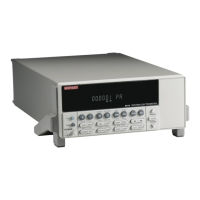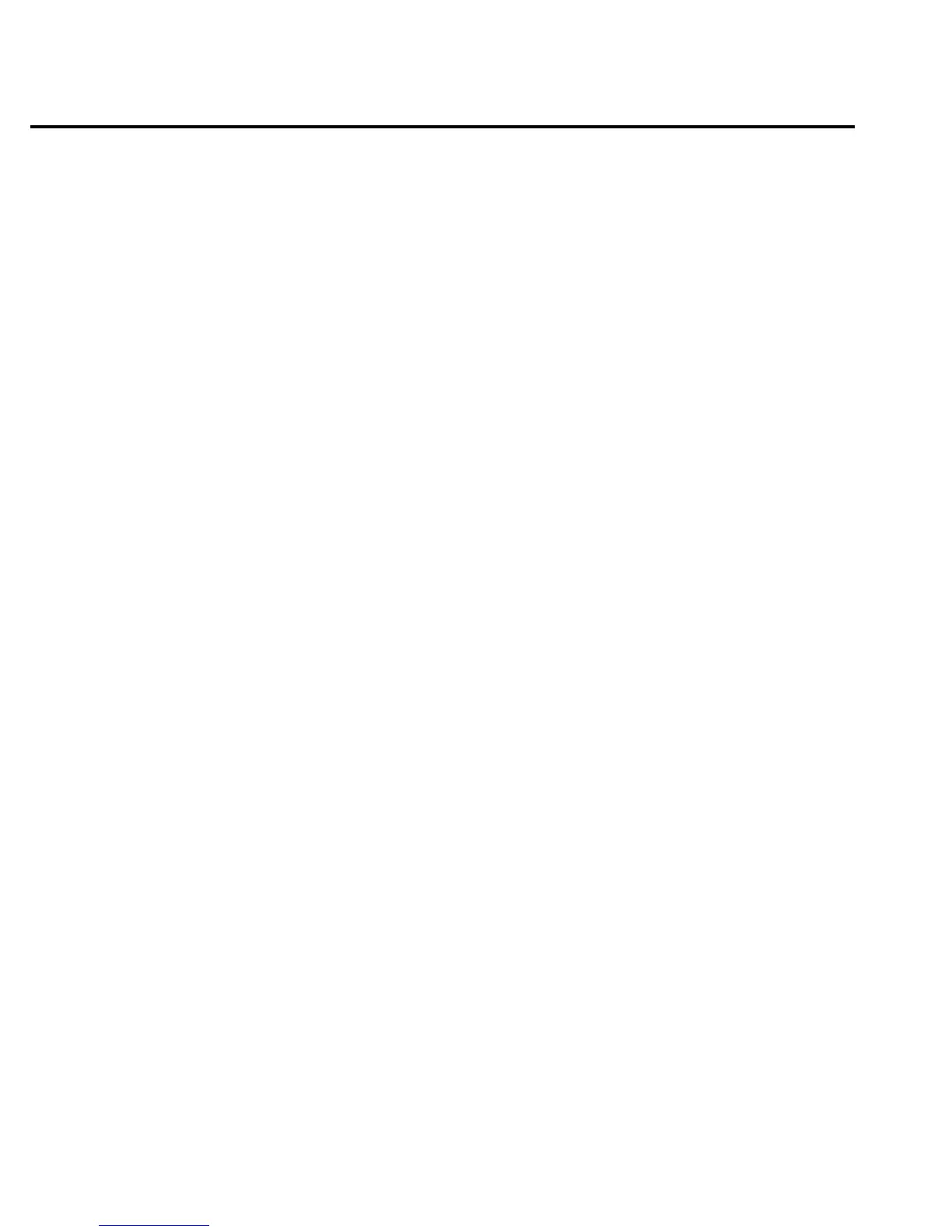13-18 Status Structure
Programming example — program and read registers
This command sequence programs and reads the measurement registers. Registers are read
using the binary format (which directly indicates which bits are set). The command to select for-
mat (FORMat:SREGister) is documented in Table 13-2.
FORM:SREG BIN ‘ Select binary format to read registers.
STAT:MEAS:ENAB 512 ‘ Enable BFL (buffer full).
STAT:MEAS:COND? ‘ Read Measurement Condition Register.
STAT:MEAS? ‘ Read Measurement Event Register.
Queues
Model 6514 uses two queues, which are first-in, first-out (FIFO) registers:
• Output queue — Used to hold reading and response messages.
• Error queue — Used to hold error and status messages.
Model 6514 status model (Figure 13-1) shows how the two queues are structured with the
other registers.
Output queue
The output queue holds data that pertains to the normal operation of the instrument. For
example, when a query command is sent, the response message is placed in the output queue.
When data is placed in the output queue, the message available (MAV) bit in the status byte
register sets. A data message is cleared from the output queue when it is read. The output queue
is considered cleared when it is empty. An empty output queue clears the MAV bit in the status
byte register.
A message is read from the output queue by addressing Model 6514 to talk after the appro-
priate query is sent.

